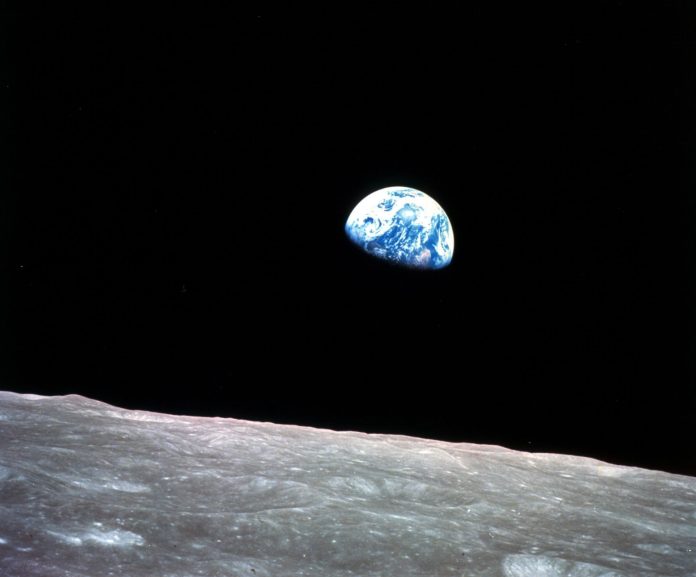
|
Only have a minute? Listen instead
Getting your Trinity Audio player ready...
|
By CAROL LEE LUTSINGER | NASA/JPL SOLAR SYSTEM AMBASSADOR
December marks the Apollo 8 mission to the Moon and the now iconic eye-opening view of Earth from the moon as astronauts Jim Lovell, Frank Borman, and Bill Anders’ moving reading of Genesis on Christmas Eve was shared with a billion Earth-bound persons watching and listening in awe.
December has significance for at least two great world religions and the significance of how many nations and peoples celebrate during this time of year should not be lost on us as humans. The whole world that had access to media watched our men on those Apollo missions, bringing our Moon into sharp distinction and the truly smallness of ourselves became significant for a brief moment during those missions. The current December issue of Astronomy magazine has an interview with Jim Lovell concerning that spectacular mission, if you want to know more.
Overcast days, evaporation, condensation, terms students are learning in classrooms across the world, impact star gazing. As weather systems cross and crisscross the continent, we may well wonder if it would be worth staying up to try to catch a glimpse of a stray meteor. I leave that to you; but seeing a blue or green, yellow, or white light streaking across your field of vision? Priceless. The Ursids peak this week giving another opportunity to see one or two.
The winter solstice, December 21, is the time when the Sun stops its motion of moving south of east when it is rising and south of west as it is setting into the horizon. It seems to stop and stand still a few days and then begin its regression along the horizon until it reaches the summer solstice when it is rising and setting farther north of the east and west locations. If your daily commute has you driving east or west at sunrise or sunset times you will have most likely noticed this phenomenon.
At noon on the 21st the sun stands as close to the southern horizon as it ever gets. The summer constellations of Scorpius and Sagittarius are there, but since our side of the Earth is facing the sun they are hidden in its glare. The sun is standing directly over the Tropic of Capricorn, 23.5 degrees south of the equator.
Earth is tilted toward the north star, Polaris, and the northern hemisphere is tilted farther from the sun while the southern hemisphere is closer to the sun.
Sunlight striking our hemisphere is at a long, slanting angle.
The tilt dilutes the radiation of heat and light from the sun which means cooler temperatures for the northern hemisphere.
It is this tilt that creates our seasons.
As the year winds down, there seem to be more family events; you might enjoy strolling through the neighborhood to enjoy the heavenly lights.
Although light pollution is gradually becoming endemic, there are still pockets of darker skies that allow for catching glimpses of stars. Looking north presents the M of Cassiopeia, the Queen of Ethiopia, as she sits on her throne that is slowly revolving about the North Star, Polaris.
Beneath her is her consort, King Cepheus who resembles a gingerbread house whose roof-peak points to Polaris. The constellation Ursa Minor, also known as the Little Dipper asterism is more discernable from dark sky areas, but with luck you may be able to locate it. The Big Dipper is low in the horizon now and only a few of its bowl stars are visible. If you are not sure where to find north, stand with your right shoulder towards the direction the sun rises at your location, your left towards where it sets, and your nose will be facing north.
Until next time, KLU.




